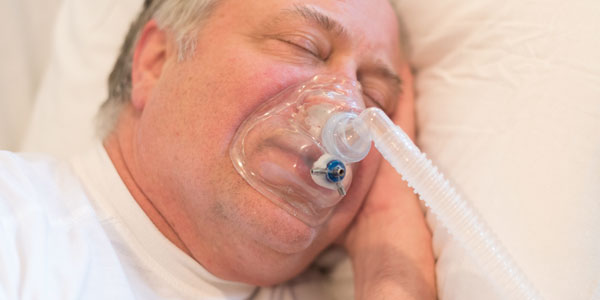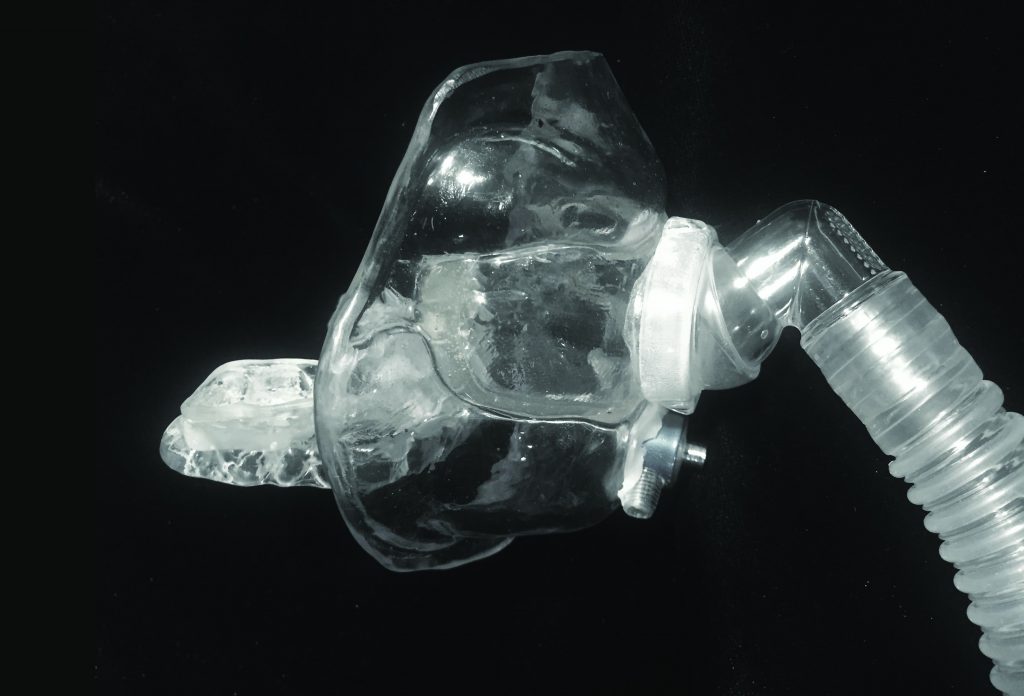
What therapeutic options does a sleep dentist have when Oral Appliance (OA) monotherapy fails? Since most dental sleep patients choose OAT (oral appliance therapy) because they have already rejected CPAP (continuous airway pressure) or are CPAP intolerant, what can be done? They can’t go back to CPAP! OAT is not resolving their sleep breathing issues. What is next? What can the sleep dentist do? Where can these patients go?
Consider using these two therapies at once. Combining CPAP therapy and OAT is indicated when both therapeutic options fail. Using two devices at once takes advantage of the best of both strategies, while eliminating the disadvantages of each.
The best of OAT is mandibular stabilization, supporting the airway by maintaining the jaw in a forward posture, resulting in increased airway patency. The best of CPAP is that the positive airway pressure supports the flexible oropharynx during pressure changes of respiration.

FCM side view
The worst of OAT is that the more the mandible is advanced, the more side effects occur. Some airways collapse no matter how much one brings the jaw forward, and the OSA continues. With combination therapy, the jaw does not have to be advanced as much, usually just 3mm. Side effects of OAT are typically eliminated. The worst of CPAP are the head straps, leakage of the mask caused by high CPAP pressures and instability of the mask on the face. With combination therapy, the pressures can be reduced and, with the jaw stabilized, mask leaking is also minimized.
There are two types of combination therapy. Type one is called “Dual Therapy.” This is when an OA is used at the same time as the CPAP. There is no integration of the OA and the CPAP, they are just both on the patient at the same time. This does not take any special training by the sleep dentist. Any sleep dentist who does OAT can offer this combination therapeutic option to the patient and to the sleep physician as a solution to failed OAT and CPAP. The oral appliances that are most effective do not allow the lower jaw to open passively.
Type two combination therapy is called “Integrated Therapy.” The CPAP is actually attached to the oral device, eliminating the head straps while providing mandibular stabilization. This option requires additional special training by the sleep dentist (www.FusionCustomMask.com). At this time, there are two types of devices that can apply integrated combination therapy. The first type attaches a nasal pillow CPAP mask to an oral appliance such as a TAP. Examples include TAP-PAP CS and CPAP-Pro. These work well for CPAP pressures less than 15cm H2O. For patients needing higher CPAP pressures, the second type of device is the Fusion Custom Mask (FCM). The FCM is custom fabricated from an impression of the patient’s face and is tightened to a post that protrudes from the mouth that is attached to an oral appliance called the Fusion Monoblock (FMB). The FMB is an upper and lower dual laminate shell that is luted together to secure the mandible in a 3mm forward position. The FCM features a stable and efficient CPAP interface, providing stabilization of the mandible and the airway. The FCM has no straps to cause mask dislodgment during sleep movements, increasing patient comfort. In addition, the FCM is firmly attached to the cranium through the fit of the FMB element to the maxillary teeth.
The patient who suffers from obstructive sleep apnea, and the sleep dentist who is trying to treat OSA, no longer have to abandon oral appliance therapy when it fails to resolve the problem. Combination therapy allows the sleep dentist the ability to treat the entire scope of sleep breathing disorders and provide hope to people desperately in need of better health.
Stay Relevant With Dental Sleep Practice
Join our email list for CE courses and webinars, articles and more..
